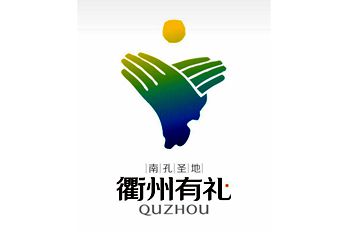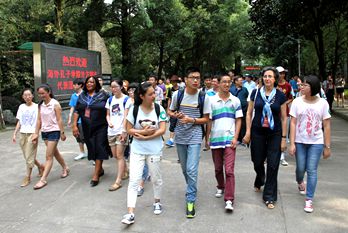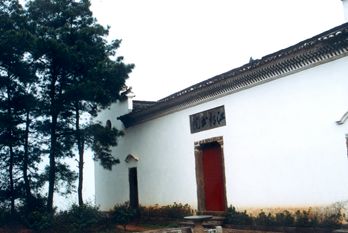Countryside areas transformed over past 20 years

A panoramic view of Xiaye village, Xianju county, Zhejiang. CHINA DAILY
Program to revive environment brings impressive benefits
The May Day holiday last month was a hectic time for Chen Jinwei, with the homestay his family runs in Zhejiang province catering to 56 visitors and bringing in revenue of around 130,000 yuan ($18,200).
"It was good business," said Chen, 57, who comes from Xiaye village, Xianju county.
Located in the western part of Taizhou city, the county is renowned for its mouthwatering yangmei — also known as waxberry or Chinese bayberry — and its breathtaking scenery.
"Xianju" translates as "dwellings for immortals" or "residences for celestial beings". Covering an area of more than 2,000 square kilometers, the county is home to hundreds of species of flora and fauna.
Junpu, believed to be the earliest detailed written study of edible mushrooms, was written in 1245 by Chen Renyu, a Xianju resident, during the Southern Song Dynasty (1127-1279).
Xianju also boasts one of China's most popular attractions — the Shenxianju Scenic Area.
Visitors have some idea of what to expect even before they arrive in the area — majestic mist-covered mountains shrouded in clouds.
Shenxianju Tourism Group, which manages the site, said nearly 1 million visitors were drawn to the scenic area in the first five months of this year, with total revenue reaching more than 170 million yuan, more than tripling the figure for the same period in 2019.
Situated in the foothills of the Shenxianju mountains to the west, Xiaye village is home to a population of over 1,500. With a river providing drinking water, and with neat houses lining its tidy streets, nearly every household in the village is connected in some way to the agritainment business, or farm-based entertainment.
Official figures show that Xiaye has 120 homestays, seven of which have won recognition from the French Development Agency. Last year, the village welcomed more than 590,000 visitors.
Locals often tell those visiting Shenxianju and staying in nearby villages they can either choose to experience what it feels like to be immortal by visiting the scenic area, or enjoy the idyllic scenes in the villages as mere mortals.
But Chen said that life in Xiaye was not so good in the past.
In the late 1990s and early 2000s, dilapidated houses strewn haphazardly about the village were the rule, rather than the exception, he said. Chicken coops, pig pens, open-air toilets and residents' homes were in close proximity and rubbish lay on the ground.
"The air stank. When it rained, sewage mixed together and flowed on to the roads," Chen added.
Many villagers, including Chen, went to the cities to seek better opportunities.
However, in the mid-2000s, the situation started to change for the better. There was less trash in the village, roads were paved section by section, rivers gradually cleaned up, and a proper bridge was built to connect an area of southeastern Xiaye to the outside world.
The improvements were the result of a province-wide campaign introduced in 2003.
On June 5 that year, World Environment Day, Xi Jinping, then-secretary of the Communist Party of China Zhejiang Provincial Committee, officially initiated the Green Rural Revival Program in Zhejiang. The program aims to transform some 10,000 out of 40,000 villages in the province in the next five years by combining water management, waste management, recycling and a series of other ecological measures — turning 1,000 of the villages into examples of moderate prosperity in all respects.
However, instead of being staged over five years, the program has since developed into a long-term project, as rural residents such as Chen reap continuous benefits.
With an improved environment and infrastructure in villages such as Xiaye, in 2010, the authorities in Xianju began to invest heavily on renovating and building new houses for rural residents, turning some of these properties into homestays to benefit from the rapidly growing tourism industry.
Since then, Xiaye and many other villages have done much more, including building collective "livestock apartments" so that residents can raise their animals away from their homes. A modern sewage treatment system has been put in place, and trash-sorting promoted, among other measures.

A visitor selects bamboo-made products in Xikou town, Zhejiang. WANG JING/CHINA DAILY
Long hours
In 2010, Chen decided to move back to Xiaye to open his own guesthouse business after spending most of the previous 15 years in Shanghai — leaving his parents and children behind in the village.
"We used to run a food stall in Shanghai, but we never earned more than 100,000 yuan a year, despite working long hours," Chen said.
He and his family make about 300,000 yuan a year running the homestay in Xiaye.
"I can now take care of my children, parents and even my fields at almost the same time, and live a much more comfortable life," he said.
Xiaye's per capita income in 2010 was 5,020 yuan, while last year, the amount rose to 29,027 yuan.
In 2002, the year before the Green Rural Revival Program was introduced, Xi traveled to 25 counties in all 11 cities in Zhejiang in less than four months to conduct extensive field research.
At the time, surveys carried out by rural affairs authorities showed that fewer than 4,000 villages in the province were considered to have a relatively good environment.
In contrast, by the end of last year, more than 90 percent, or some 36,000 villages, were rated "beautiful villages in the new era" by provincial authorities. The ratings were based on 100 indicators covering fields such as ecology, livability, infrastructure, among many others.
During the past two decades, governments at various levels in Zhejiang have invested more than 200 billion yuan on building a more beautiful countryside.
Efforts to consistently implement the Green Rural Revival Program have won the province and China global recognition.
In September 2018, the program received the Champions of the Earth award from the UN Environmental Program, or UNEP, the global organization's highest environmental honor.
The UNEP website said, "This exceptionally successful eco-restoration program shows the transformative power of economic and environmental development together."
The Green Rural Revival Program has also helped reshape areas of Longyou county, Quzhou city, Zhejiang.
Xikou township, which once faced problems similar to those in Xiaye, was commonly referred to as "dirty, messy and poorly managed". Unlike Xiaye, which relied primarily on agriculture, Xikou once boasted one of the best-known pyrite ore mines in China.
In the early-to-mid 2010s, as the deposits dried up and local authorities strengthened industrial restructuring efforts to achieve more sustainable economic development, a large number of mining workers and their families moved out.
In one large area where these residents used to live and work, the production plants, dormitories, dance hall, cinema, canteen, school and hospital, which were mostly built in the 1970s and '80s, fell into disuse, along with many other buildings and facilities.
Miao Chenhui, an official from Xikou, said, "For a while, this place, which was once teeming with people, was deserted."
However, Miao said refurbishment work soon began, and the area was quickly transformed into a "rural future community", with investment of more than 200 million yuan, and with the original features of the old buildings largely retained.
The old square was equipped with wooden and stone benches, on which residents rest and chat. The cinema was turned into a cultural hall, the dormitories became guesthouses, and the old factories now serve as shared offices for entrepreneurs such as Jiang Peng.
A native of Longyou, Jiang, 35, decided to settle in Xikou in 2018, after quitting his job as an art director in Hangzhou, capital of Zhejiang. In Xikou, he launched a company making and selling agricultural products, especially those made from bamboo. Longyou is home to more than 26,666 hectares of bamboo forests.
"I had long thought of promoting the specialties of my hometown to a wider audience and helping with rural vitalization," said Jiang, whose workshop is situated in Xikou's Old Street, another area transformed through the Green Rural Revival Program, and which attracts crowds of visitors, particularly during holidays.

Bamboo weaving is a traditional craft in Xikou. WANG JING/CHINA DAILY
Overseas sales
By combining a more contemporary artistic outlook with tradition, Jiang, who studied design at college, and his team produce a variety of bamboo products popular with customers, such as fans, baskets and animals.
Last year, they sold such products worth more than 15 million yuan, not only in China, but overseas, including the United States, Europe and Southeast Asia. More important, Jiang has produced more opportunities for local residents.
Xu Mingguang, a 70-year-old retired master maker of bamboo products, started to learn the trade when he was 13. But when he was in his 40s, the industry declined significantly, with plastic items largely replacing those made from bamboo.
"I then had to work as a driver and a security guard to earn a living," Xu said.
As rising numbers of tourists visit Xikou, and as e-commerce booms in rural areas, more people are being attracted to or are rediscovering the charm of bamboo products, he said.
Xu, who earns at least 3,000 yuan a month, added: "I am now doing my favorite work again. I'm also teaching a number of young apprentices. It's important that my weaving skills are passed down from generation to generation."
Ran Hao, professor at the CPC Central Committee's Party School, also known as the National Academy of Governance, said the Green Rural Revival Program epitomizes the Chinese path to modernization.
"By pursuing the harmonious coexistence between humanity and nature, the program has effectively improved the living conditions and overall well-being of Zhejiang's rural residents, laying a solid foundation for realizing common prosperity," Ran said.
Authorities in different parts of the country are learning from the program, the success story of which offers valuable experience at home and abroad, he added.
Figures from the provincial bureau of statistics show that the disposable income of Zhejiang's rural residents last year rose to 37,565 yuan, the highest among all provincial regions for 38 years.
The changing landscape of Zhejiang's rural areas has not only attracted those such as Chen and Jiang back to their hometowns, it is also luring overseas visitors.
In April 2021, Jeong Hyojun, a South Korean student then studying at Tsinghua University, and his classmates arrived in Lizu village, Yiwu city, on a field trip to investigate China's culturally empowered rural vitalization.
"It was our first time in the area, and we were immediately impressed by its natural and entrepreneurial environment," Jeong said.
Lizu has followed a similar trajectory to Xiaye and Xikou in the two decades since the Green Rural Revival Program was introduced.
Fang Haolong, Party secretary of Lizu, said, "It may sound ridiculous, but even our own residents used to dislike the village."
But by 2017, after the village was cleaned up and its infrastructure and facilities upgraded, Lizu had become part of a "boutique travel route" developed by the authorities in Yiwu to connect more than 100 "beautiful villages" across the city.
As the village sought to distinguish itself through more cultural creation during Jeong's trip, he and his classmates agreed that the village was an ideal testing ground for their project.
In July 2021, Jeong's team, comprising 15 students from different countries, rented an old house in Lizu. They turned it into a "cultural space", in which customers drink coffee and buy traditional clothing and a range of cultural and creative products. Art exhibitions and even table games are staged in this space.
By creating such a space in the village, Jeong said they hope to attract young people from cities to immerse themselves in the rural atmosphere and experience a different way of life. "We are also trying to attract young people living in the village and nearby areas. Ultimately, they will be the inner force for rural development," he said.
More than 200 agricultural entrepreneurs, including Jeong, have set up shop in Lizu, engaging in various forms of business. By the end of last year, their businesses had generated consumption worth 5 million yuan and helped raise villagers' per capita income by 2,500 yuan, official figures show.
"So far, our project has been successful, and it still has a lot of potential," Jeong said.
"In my travels to the countryside in Zhejiang and nationwide, I've discovered the unique charm of different villages, and their beauty and vitality await to be discovered by more people," he said.
Li Lei contributed to this story.

 City brand logo - fist-and-palm salute
City brand logo - fist-and-palm salute Confucianism on campus
Confucianism on campus The culture of the academy
The culture of the academy